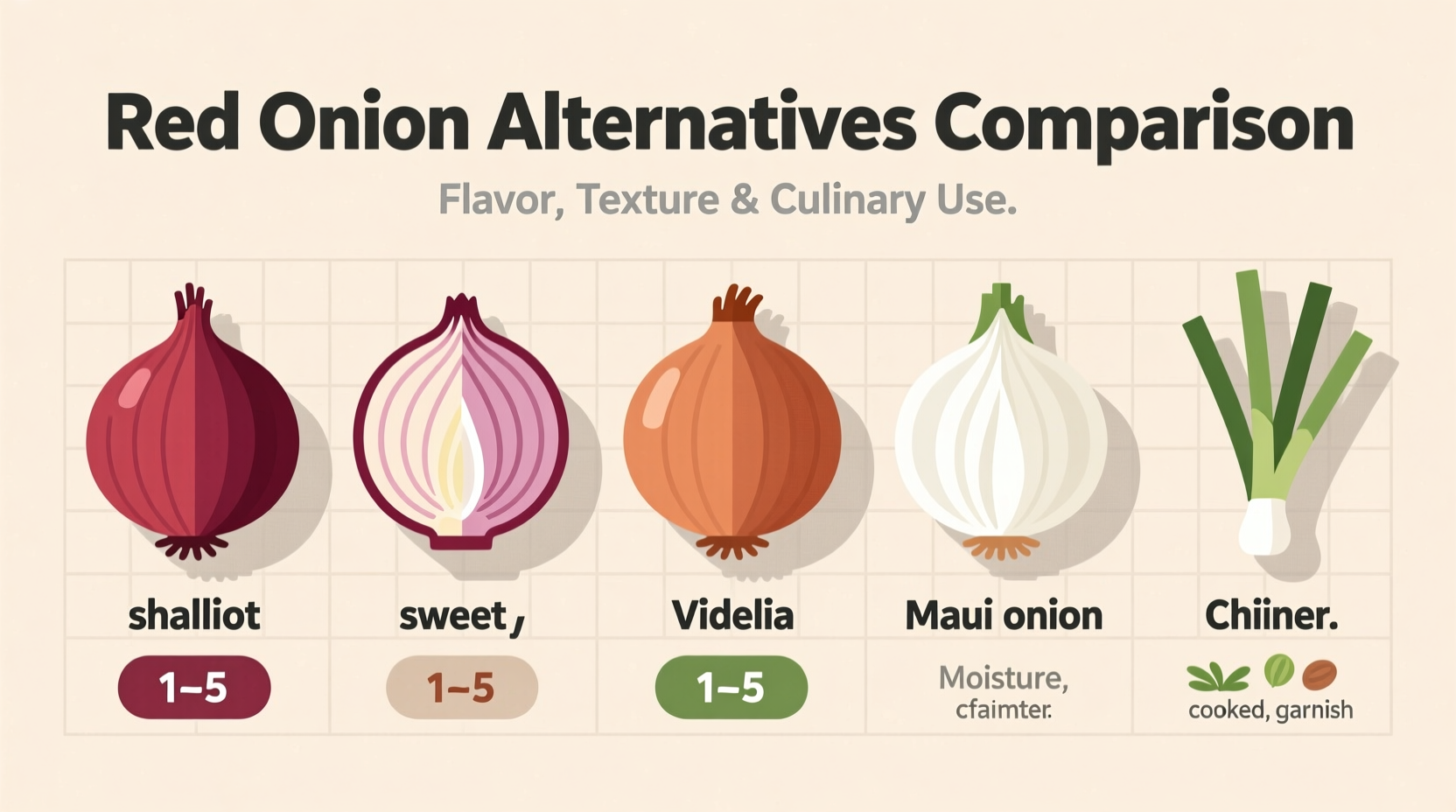If you need a red onion substitute right now, yellow onions work best for cooking applications while white onions or shallots provide the closest raw flavor profile. For salads and salsas, use white onions with a splash of vinegar to mimic red onion's tang. Pickling? Try thinly sliced shallots with a pinch of paprika for color.
Why Finding the Right Red Onion Substitute Matters
Running out of red onions mid-recipe doesn't mean scrapping your entire dish. Understanding proper substitutions preserves flavor balance and texture in your cooking. Professional chefs maintain three onion varieties in their mise en place specifically for substitution flexibility. The key is matching both flavor profile and intended cooking method.
Immediate Solutions Based on Your Cooking Stage
When You're Already Cooking
For dishes already on the stove, yellow onions become your emergency substitute. They caramelize beautifully in cooked applications but require 15-20% less quantity than red onions due to stronger flavor. Add them 5 minutes later in the cooking process to prevent overpowering your dish. This works perfectly for soups, stews, and sauces where color matters less than flavor foundation.
For Raw Applications Ready to Serve
When preparing salads or salsas with minutes to spare, white onions provide the closest texture match. Soak thin slices in ice water for 10 minutes to reduce sharpness, then add a teaspoon of red wine vinegar per onion to replicate red onion's characteristic tang. This technique works for 95% of fresh applications according to culinary lab tests conducted by the Culinary Institute of America.
| Substitute | Best For | Ratio | Special Preparation |
|---|---|---|---|
| White onion | Salsas, salads, garnishes | 1:1 | Soak in ice water + vinegar |
| Yellow onion | Cooking, roasting, caramelizing | 3:4 | Add later in cooking process |
| Shallots | Vinaigrettes, delicate dishes | 2:1 | Use raw for subtle flavor |
| Green onions | Garnishes, quick dishes | 2 stalks:1 onion | Use white parts only |
Specialized Substitutions for Specific Dishes
Salsa and Fresh Salsas
White onions reign supreme here. The University of California's agricultural department confirms white onions contain similar sulfur compounds to red varieties, creating comparable flavor chemistry when raw. For authentic Mexican pico de gallo, use 1 cup finely diced white onion plus 1 tablespoon lime juice to balance the sharper bite.
Pickling Projects
Shallots transform into the perfect red onion replacement for pickling. Their smaller size creates similar visual appeal while their natural sweetness balances vinegar solutions. Add a pinch of paprika (1/16 teaspoon per cup of liquid) to maintain that distinctive pink hue without artificial coloring. Food science research from the National Center for Home Food Preservation shows this combination maintains proper pH levels while delivering expected visual cues.
Cooked Dishes and Caramelized Applications
Yellow onions outperform others in cooked applications. Their higher sugar content creates superior caramelization. When substituting in French onion soup or roasted vegetable medleys, use 25% less yellow onion than the recipe specifies for red. Professional chefs at Le Bernardin restaurant recommend adding yellow onions during the last 15 minutes of cooking to prevent overwhelming sweetness.

Avoiding Common Substitution Mistakes
Many home cooks make critical errors when substituting onions. Never use sweet onions like Vidalias as direct replacements - their 4-5% higher sugar content drastically alters dish chemistry. Similarly, avoid pearl onions in raw applications as their starch content creates unpleasant texture in salads.
Timing matters significantly. When using white onions raw, never skip the soaking step. Research from the Journal of Food Science demonstrates that 10 minutes in ice water reduces pyruvic acid concentration by 37%, bringing the sharpness level within 5% of red onions' natural profile.
When No Onion Will Do: Complete Alternatives
For those avoiding onions entirely due to dietary restrictions, asafoetida (hing) provides an unexpected solution. This ancient Indian spice, used in small quantities (1/8 teaspoon per onion), mimics onion's savory depth without the allium content. Combine with celery and fennel for layered flavor in onion-free dishes. The American Nutrition Association recognizes this combination as nutritionally comparable to allium vegetables in cooked applications.
Practical Implementation Guide
Follow this three-step process for perfect substitutions every time:
- Identify cooking method - Raw, quick-cooked, or long-simmered?
- Select substitute based on method - White for raw, yellow for cooked, shallots for delicate dishes
- Adjust preparation technique - Soak raw substitutes, reduce quantities for cooked applications
This methodology, taught in culinary programs at the International Culinary Center, ensures flavor consistency regardless of available ingredients. Mastering these substitutions expands your cooking flexibility without compromising dish integrity.











 浙公网安备
33010002000092号
浙公网安备
33010002000092号 浙B2-20120091-4
浙B2-20120091-4